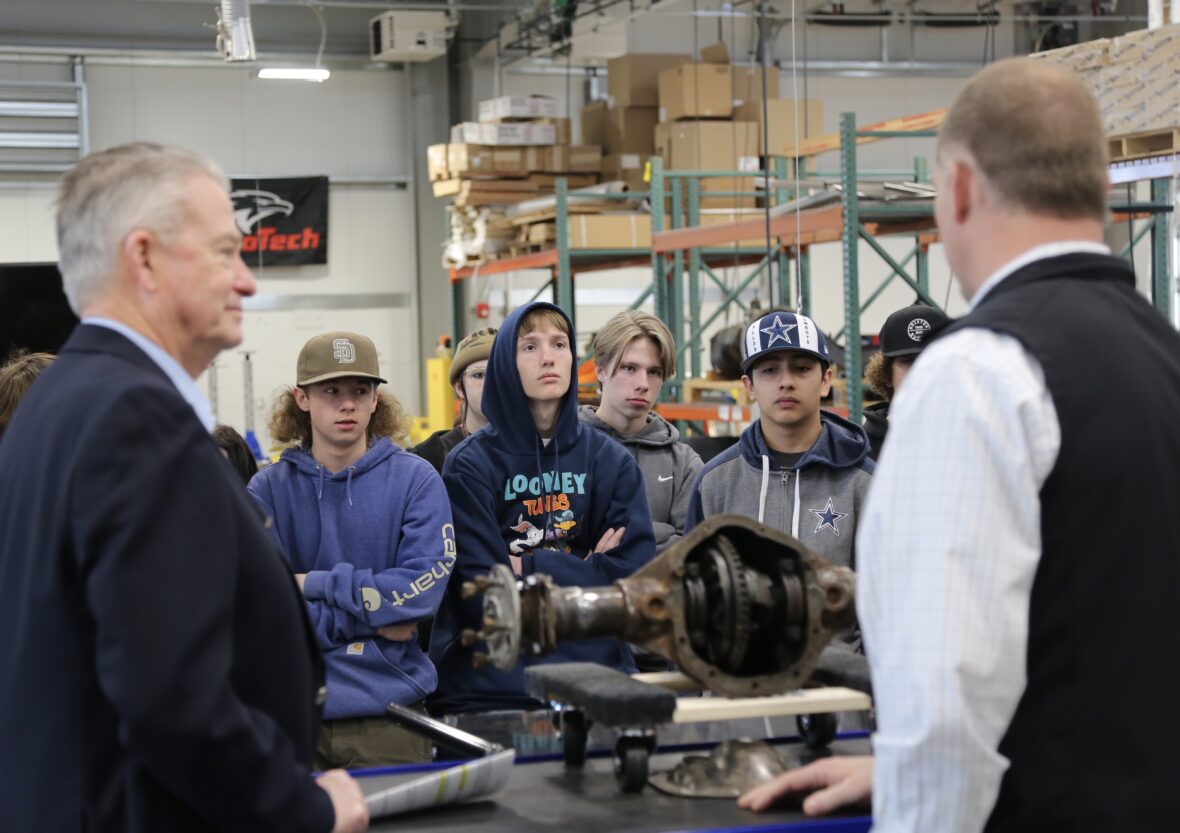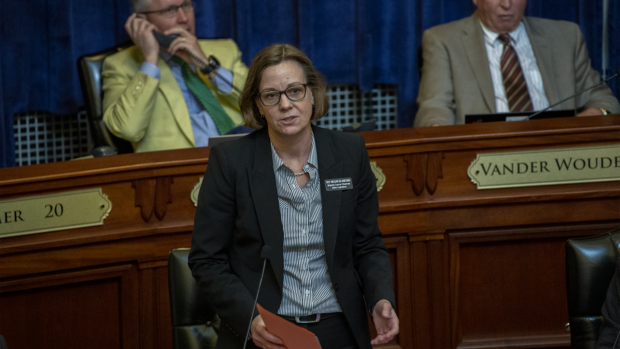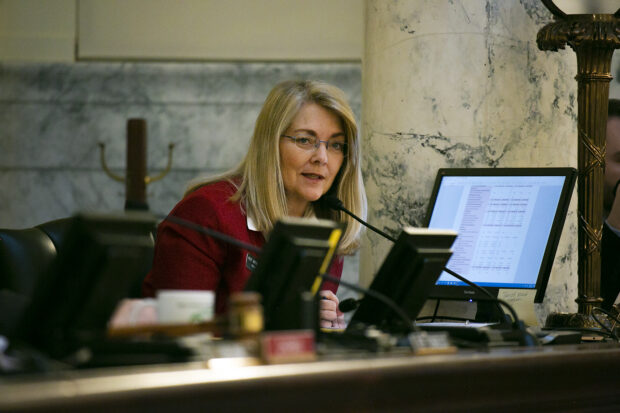
It was tough getting Idaho Launch through the Legislature.
And it will be tough getting it off the ground.
The implementation process is already underway, barely a week after Gov. Brad Little signed the last of the hotly debated Launch bills into law. By 2024, the program will provide high school graduates with up to $8,000 to attend community college or receive workforce training. With an annual price tag of up to $80 million, this is Little’s aggressive but controversial plan to steer young adults into high-demand careers.
But before the money goes out, the state’s Workforce Development Council has to build a program. The summer 2024 startup date is deceptively close.

“It’s going to go quickly,” said Wendi Secrist, executive director of the Workforce Development Council, the state agency that will be in charge of Launch.
There is some physical separation between the council and the state’s education agencies. The council’s staff of 11 works in the lower floor of the old Depression-era Ada County Courthouse, across the street from the Statehouse and a couple of blocks from the State Department of Education and the State Board of Education. The more important distance is one of mission: the council’s focus is on the job site, not the classroom.
But Launch will have one foot in economic development and one foot in education.
In rolling out Launch, Secrist envisions a program that looks a little like one of Little’s other big education initiatives — Empowering Parents, a grant program designed to help parents of K-12 students cover the out-of-pocket costs of a new laptop or a tutor. The Launch online portal will follow a similar model, allowing graduates to direct their share of state money where they want it to go.
Secrist also says Launch will need to coordinate closely with the State Board and its platforms — especially its Next Steps site, a one-stop shop for high school students exploring college and career options. She’d like to make sure students can go to one website and apply for Launch money or the Opportunity Scholarship that covers four-year college. Students who might not qualify for the Opportunity Scholarship might be eligible for Launch money, Secrist says, and the state needs to streamline the application process.
Secrist also knows Launch will have to coordinate — and quickly — with high schools. Before August and September, when prospective Launch applicants show up for their senior year of high school, the state is going to need to bring college and career counselors up to speed on the new program. That means providing counselors with a “welcome kit” by Aug. 1, so they can help students navigate the application process as soon as the school year starts.
The clock is ticking since the state is supposed to award its first Launch grants by Dec. 31, promising money to a first wave of recipients who will graduate high school next year.
“Honestly, we’ve got to have applications open by Oct. 15,” Secrist said in an interview this week.
The fact that Launch is now up and running, and facing a demanding deadline, never was a sure thing. The proposal ran into resistance almost as soon as Little sketched it out in his Jan. 9 State of the State address, with critics labeling it a giveaway to students and a payback to Little’s allies in the business sector.
The first Launch bill passed the House by a scant 36-34 vote, keeping the proposal alive and averting what would have been an embarrassing political setback for Little. Two Launch bills — the original bill and a “trailer” bill that tightened the program and added reporting requirements — survived a tense Senate floor debate on March 22.
The trailer bill requires annual reports to the Legislature — including student demographics, completion rates and “retention rates” to track whether Launch graduates stay in Idaho, or take jobs elsewhere. The reports should provide data for lawmakers who have the job of scrutinizing the program.

House Majority Leader Megan Blanksma, one of Launch’s steadfast Statehouse supporters, recognizes that the Workforce Development Council has a lot of work to do. But the Hammett Republican has some opinions about how she wants the rollout to unfold.
First, Blanksma wants the council to work closely with state superintendent Debbie Critchfield. The superintendent’s State Department of Education was another beneficiary from this session’s emphasis on the workforce; lawmakers gave SDE in one-time money to start up new career-technical education programs in rural Idaho high schools. Blanksma wants to be sure there is no duplication between the CTE programs and the Launch-funded training.
But Blanksma also said she doesn’t want Launch to turn into a community college “slush fund.” Some of the money needs to go into short-term CTE and job training programs, to help young adults who want to start a career but don’t want a two-year degree. “The point of the Launch program was to keep all of our options open.”
Rep. Wendy Horman, co-chair of the Joint Finance-Appropriations Committee, voted against the first Launch bill but supported the trailer bill. Her big question can’t be answered immediately: Will Launch recipients find good jobs, and is the state ready to measure success? In the short term, she wonders how industry steps up to match an $80 million state investment in workforce training. “Taxpayers are making a significant contribution,” said Horman, R-Idaho Falls. “What is industry’s contribution going to be?”

The Legislature provided Secrist $5 million of state money to develop Launch — and like the previous Launch proposals, this budget also ran into considerable resistance in the House and Senate. But the money came through, and it will allow Secrist to hire staff, purchase an online platform for Launch applications and prepare program materials for high schools.
But while that task begins, the council itself will do its work, perhaps under some increased scrutiny. The group will meet on June 7 to define what constitutes an in-demand career, and, in turn, what kind of training qualifies for Launch money.
The 37-member council — representing industry, state agencies and elected officials — normally uses labor statistics and regional reports to compile a list of in-demand careers. It has been a public process, hashed out in an open meeting, but not necessarily a newsworthy one. But Launch may have changed all that. During the prolonged and divided legislative debate over Little’s proposal, critics said a state-generated list of in-demand careers smacked of central planning, of picking private sector winners and losers.
From here on out, it’s safe to assume that all aspects of Launch — from the definition of an in-demand career to the $5 million rollout — will be under a Statehouse microscope.
Blanksma says she likes Secrist’s enthusiasm for the program, and her ability to walk the line between what Little’s office wants and what legislators can live with. “I think she’s going to be a good asset,” Blanksma said, “because she’s interested in making it functional.”
Secrist knows that some lawmakers will never buy into Launch, and her job involves listening to the skeptics — legislators who have been lukewarm to the idea. She says she has no problem with Launch’s rocky path through the legislative process; she says she didn’t take the pushback personally, and said it improved the product.
“I certainly did think that it would move through a little quicker than it did, but that’s OK,” she said. “We got a good piece of legislation at the end.”
And with the end of that debate comes the start of a daunting rollout.
Each week, Kevin Richert writes an analysis on education policy and education politics. Look for it every Thursday.
